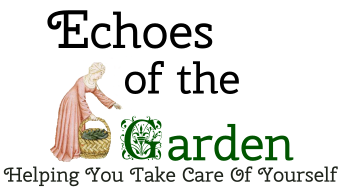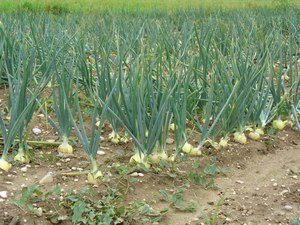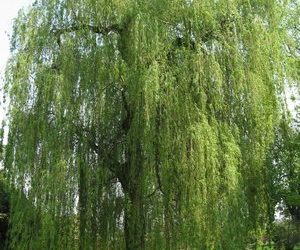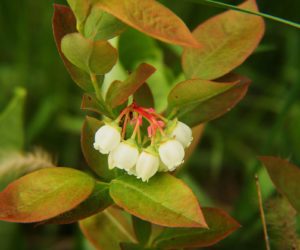I love onions. The more, the tastier, in my opinion. Cooked pretty much any way imaginable and in sweet jams, as well. I keep threatening to make candied onions. One of these days I will. They’re easy to grow and very pretty. There’s very little waste as all of the plant is edible but for the roots. The little wild onions… Continue Reading…
In his book, TREES:A WOODLAND NOTEBOOK, the Right Honorable Sir Herbert Maxwell says:The name “willow” speaks to us of a time when our Anglo-Saxon forbears dwelt in wattled houses. They spoke of the tree aswelig and also as widig (whence our “withy”), the root-meaning being pliancy. Another old English name for the tree was “sallow,” which in the north has been shortened… Continue Reading…
It is believed that the start of fired pottery began when someone who needed to boil water covered their willow basket with clay and put it over the fire. The fire got hot enough to burn away the willow and fire the clay. This site has a good description of the progression of the early art of pottery, as does this… Continue Reading…
Humanity’s association with the willow has been a long one and, for humanity at least, a profitable one. There is evidence of use of willow all the way back to Paleolithic times. It is only comparatively recently that we have tamed and cultivated it. The most recognized member of this family is the Weeping Willow. While the original Weeping Willow is… Continue Reading…
I have always had willows around me wherever I’ve lived. I played under them as a child and planted them as an adult. I’ve come to love them but even I admit that while they’re beautiful, they’re hardly showy. It’s surprising how large an impact this plant has had on human lives and how long ago we met. Let’s get started.… Continue Reading…
A lesser known offering from Robert Frost. I’m not sure what to think about it. It is, as usual for the author, full of imagery but it seems to be about two people planning to steal fruit from their neighbor. Did I get that right?By the way, “chewink” is an old name for the Eastern Towhee. This cute alliterative story about a… Continue Reading…
In his book Flower Lore, Rev. Hilderic Friend tells us that “The Whortlebury, emblem of Treason, growing in wastes, affords a juice which was often used in more dangerous times to stain and disfigure the face.” I’m not sure why “the emblem of treason” but the use of blueberries as a dye was apparently fairly common throughout history. Here is an… Continue Reading…
While the blueberry and the bilberry are used interchangeably in the kitchen, the bilberry has a definite edge in the pharmacy. The most obvious fieldmark (an easily recognizable characteristic identifying a plant or animal positively) between the two is that the flesh of a blueberry is green and the flesh of a bilberry is blue or purple. This indicates a much… Continue Reading…
Blueberries are and their relatives are very popular in the kitchen. My problem wasn’t finding enough good recipes, it was narrowing it down to a few. I gave up. The first mention of the bilberry in Europe was in the sixteenth century and of the blueberry in America in the late eighteenth. The closest thing I found to an early recipe… Continue Reading…
Vaccinium spp. are shrubs. Depending on the species they can grow anywhere from 1′ to 8′ tall. All of them require full sun and a well-drained soil with a P.H. of 4.5 to 5.5. Here’s some good basic growing information from the Minnesota Extension Office and here’s an article on how to prepare a bed and which amendments are best to… Continue Reading…
Blueberry Vaccinium spp Blueberry (V. corymbosum or V. ashei) Bilberry (V. myrtillus) Wild Blueberry (V. augustifolia) I have never tasted a bilberry, although I have tried its cousin, V. augustifolium or the low bush blueberry a.k.a. the wild blueberry. I must confess to not liking blueberries. The rest of my family likes them though, so every year I make blueberry jam… Continue Reading…
Felicia and the Pot of Pinks was another of my favorite fairy tales. I always wondered- why a pot of pinks? Why not a pot of, say, geraniums? Through my research this week one of the things that I discovered is this from a book entitled Flower Lore by Hilderic Friend: It has been generally supposed that the name has reference… Continue Reading…
Aelfrida would have been unfamiliar with the plant that I so enjoy, as this cultivated variety didn’t appear until the 1450’s.Here is a nice article on the search for the original medieval pink. In Shakespeare’s time, the gillyflower was a symbol of promiscuity because of how easily it hybridized.Today, the carnation has come to be a symbol of many different movements,… Continue Reading…
The Carnation has been used medicinally for approximately 2000 years, at least in China. This site gives a good account of its use there. Gerard tells us of the carnation:“The conserve made of the floures of the Clove Gillofloure and sugar, is exceeding cordiall,and wonderfully above measure doth comfort the heart, being eaten now and then.”and“It prevaileth against hot pestilentiall fevers, expelleth… Continue Reading…




